ABOUT

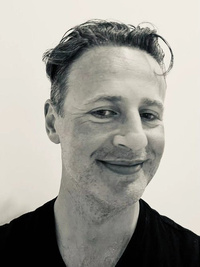
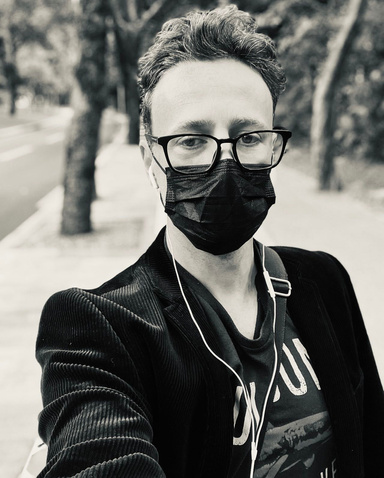
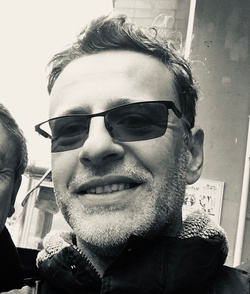
ARTIST BIO
Francois "Fox" Pretorius is best known for his experimental style of abstraction and its conceptual interplay between content and medium. Ranging from satire to social commentary and from art about art to intertextual playfulness in his earlier work, to the more abstract narrative of a visualized personal history and identity in recent years, his art is characterized by an everpresent tussle between chaos and order.
As a contemporary visual artist originally from South Africa, Pretorius has participated in numerous exhibitions showcased in various countries over the past decade. His art has been construed as visually and conceptually fluid with the ability to be simultaneously reflective, ironic, and piercing, to which renowned art critic Johan Myburg has added, "... Pretorius' works invite the viewer to reconsider, re-evaluate and rethink the prevailing status quo notions on differentiation within the populace, not by outlining the inherent politics, but by reviewing the spaces where different aspects of one's own life unfold as supposed to those of one's immediate others."
He currently works and resides in the city of Shenzhen, bordering Hong Kong to the north in mainland China.
ARTIST STATEMENT
Chaos and order: a universal intertidal force of ebb and flow. This ever-competing and changing relation is what best describes my work and the experimental nature of my creative process. It is always present through the ongoing contests and discourses active in my art: between visual structure and organic freedom, between the space of thought and the space of being, between idea and experience.
Originally hailing from South Africa, I’ve spent many years working and traveling abroad, initially in Europe but since then more extensively in Asia, and have consequently been based in China since 2018. Memory, personal experience, and reflections on a fluctuating state of being, inform the narrative bulk of my recent work along with contemplations on the intricacies of identity, relationships, love and loss, and the idiosyncrasies of everyday life as a foreigner.
Rooted in the mark-making of the prehistoric, the so-called primitivist, the abstract modern and beyond, my printmaking, painting and otherwise creative practices aim to construct episodes of a fading past and an imposing present. Like footnotes in the bigger story on the hybrid and diasporic nature of humanity in an increasingly globalized 21st century, I seek to notate my existential experience through abstract imagery. And, through this art of visuals, I find myself swaying between the roles of being both culprit and exponent of our dawning metamodern age.
BODIES OF WORK
Life changes have presaged important progressions in my creative practice. Each body of work, even those which may seem formally similar, are idiosyncratically unique statements. The Pendoring Paintings (since 2019 and onwards) are most reflective of where I come from. They use linear and spatial elements to reflect upon my personal life and my creative relationship, through linear and spatial dynamics, to art history, as the pendoring (or pen-like thorn) branches construct an organic lattice that recalls Abstract Expressionism yet protrude into the figurative marks left of memories. They are part and parcel of a search for a new visual language for my new chapter in China. The continuation of this search is expanded by The Hualikan series of monotype prints, which are more formally experimental as a means of expressing a coming-to-terms with living in urban China with its vastly different cultures, sub-cultures, norms and values; the Xingsha prints are more concerned with venting reflections upon a changing personal life; and the Taoyuancun prints turn outward again, encompassing the hustle of everyday city life, with specific reference to Shenzhen. Each of these series embodies the ambiguity of my experiences and yet matches them with a model for perceptual interpretation that is urgently emphatic.
Ever tried. Ever failed. Never mind. Try again. Fail again. Fail better.
- Samuel Beckett
PAINTING
PENDORING PAINTINGS / 2018 - 2022 (ONGOING)
The ongoing series of Pendoring paintings is first and foremost inspired by pendoring trees (Accacia karroo of the Fabacea genus) - thorn trees characteristic in the Klein Karoo landscape in South Africa where I grew up and commonly found throughout Southern Africa. These trees can grow up to 12 meters tall and are covered with paired, straight white thorns that can grow very long. As kids my friends and I used to play barefoot soccer at school under and alongside the canopies of these trees and it often happened that one would end up stepping into one or two of these thorns. Then one would cry or bite on your lip, remove the thorns, collect yourself and continue to play. As a profound memory of my childhood this turned out to be quite the metaphor for navigating one's way through life, and it is precisely this metaphor that I explore visually in this series of paintings.
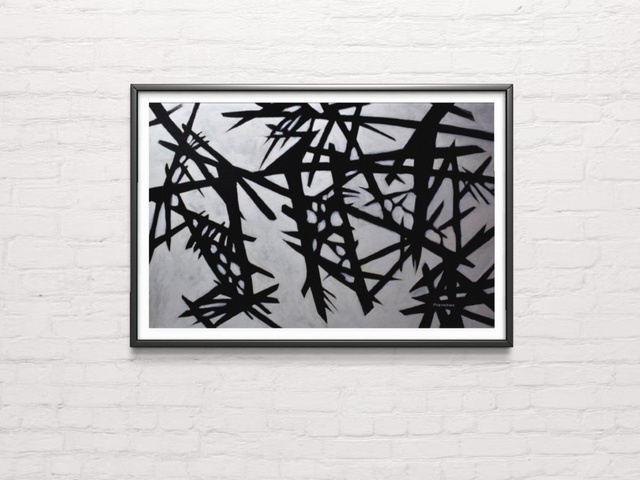
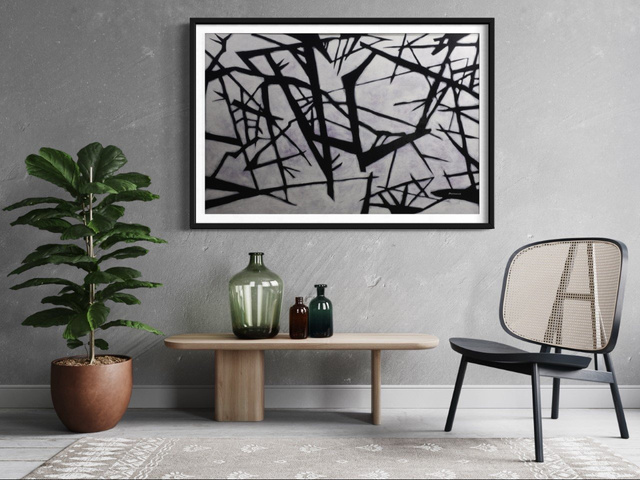


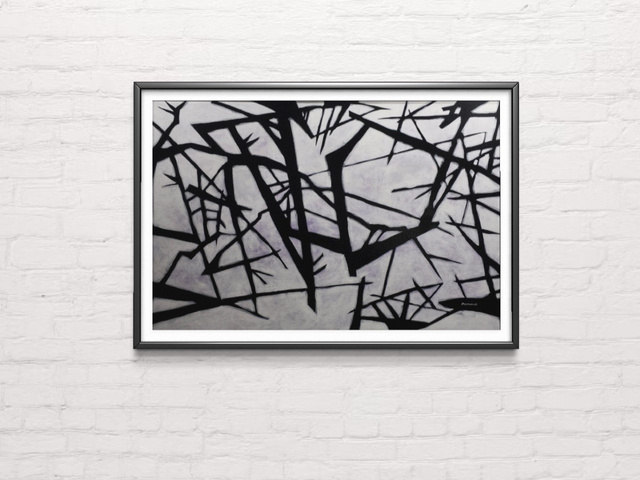
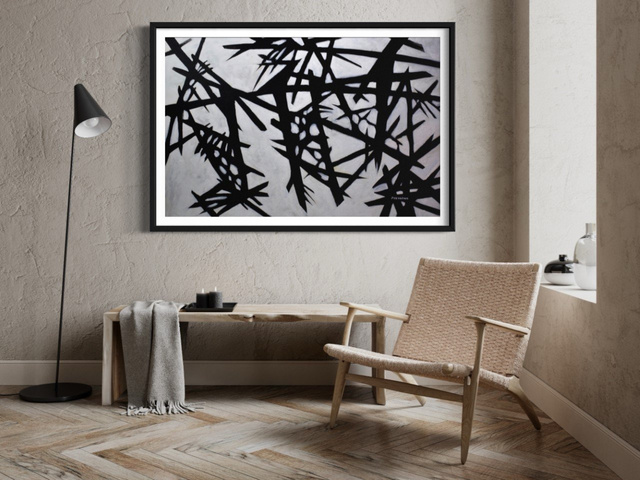
Apart from its abstraction, these compositions also double as African landscapes while its content speak of one's journey to accomplishment, of overcoming obstacles and setbacks, and ultimately, obtaining and appreciating the value of hard earned success. In its interpretation these abstract landscapes can be read by the viewer in terms of their own personal narratives and sense of achievement. Simultaneously, given my history, these works can also be read as a reflection on the harshness and instability of South Africa's ongoing political and socioeconomic landscape. The stark contrast of the overwhelming use of black and white paint also lends emphasis to this interpretation although some of the paintings in this series. This style has since been applied to more figuratively recognizable compositions as well.

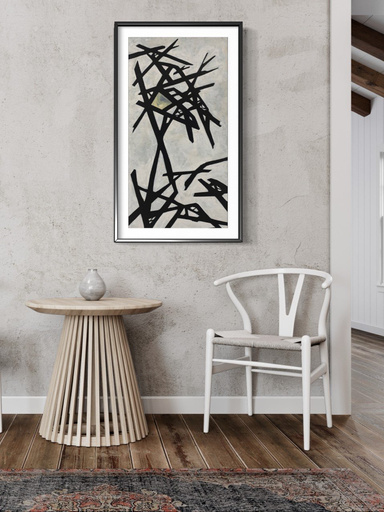
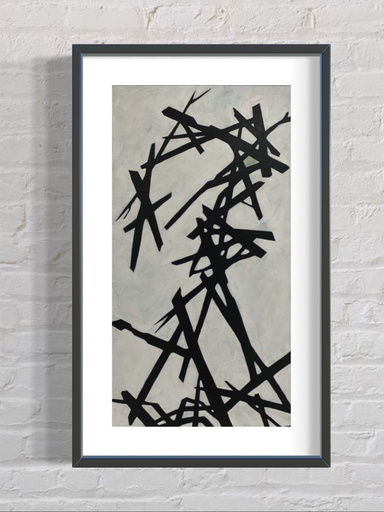

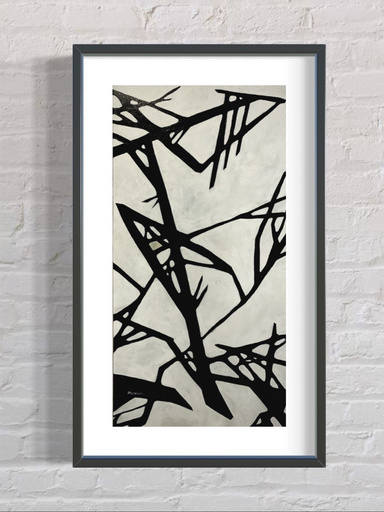
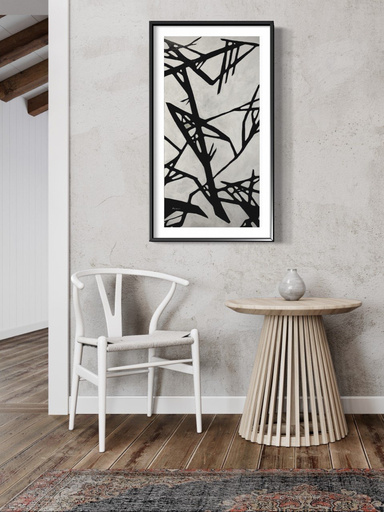
PRINTmaking
TAOYUANCUN MONOTYPES / 2021 - 2022
A series of oil-based monotypes created whilst living near the Taoyuancun subway station in the Nanshan district of Shenzhen, China.
Selected examples of prints from this series shown.
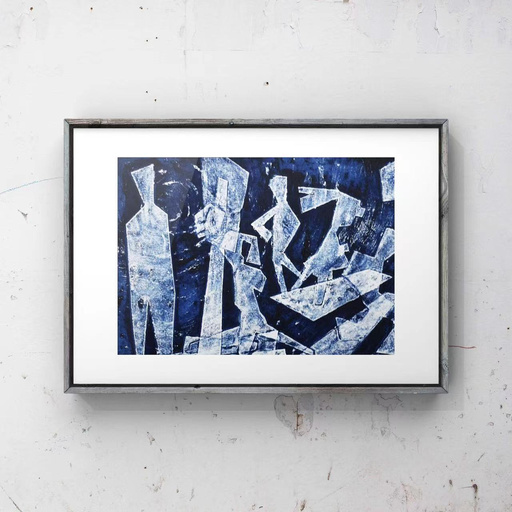

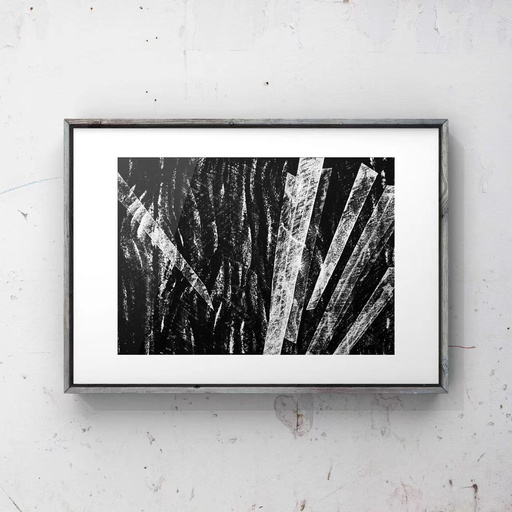
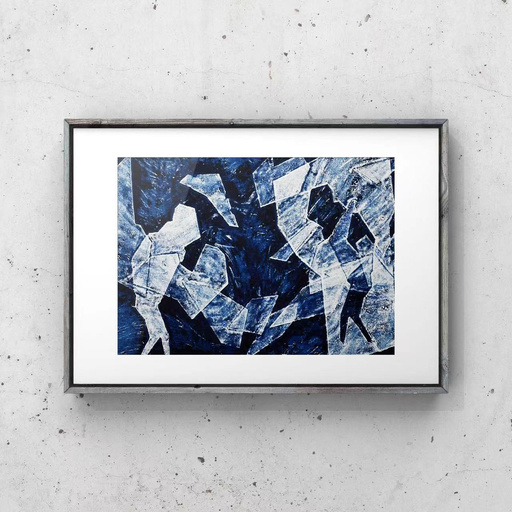
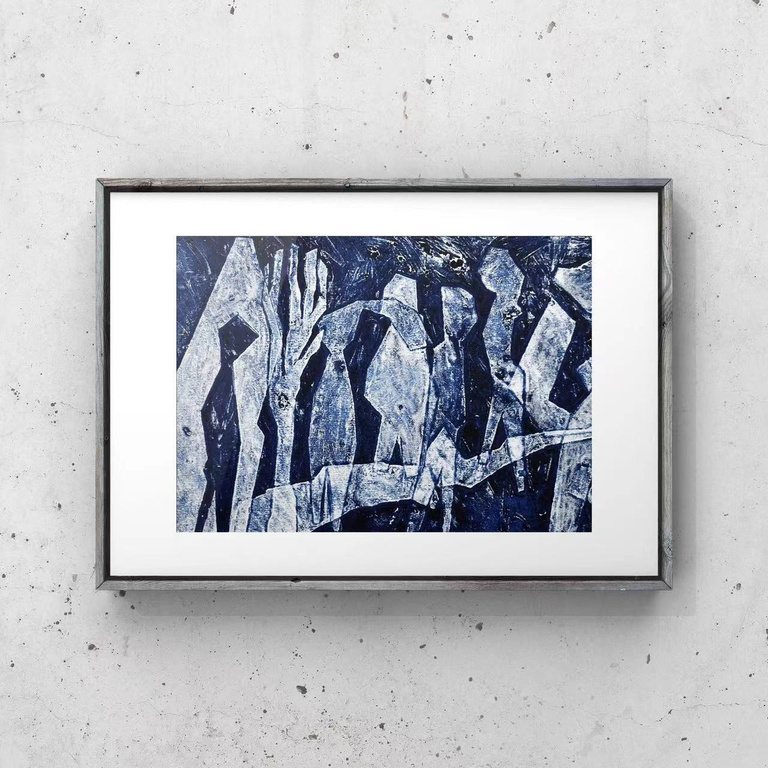
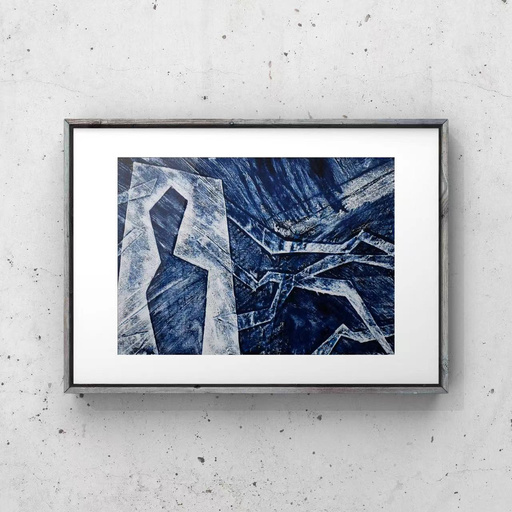
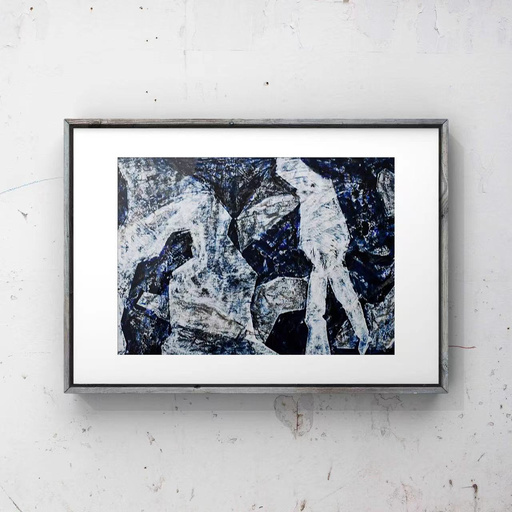
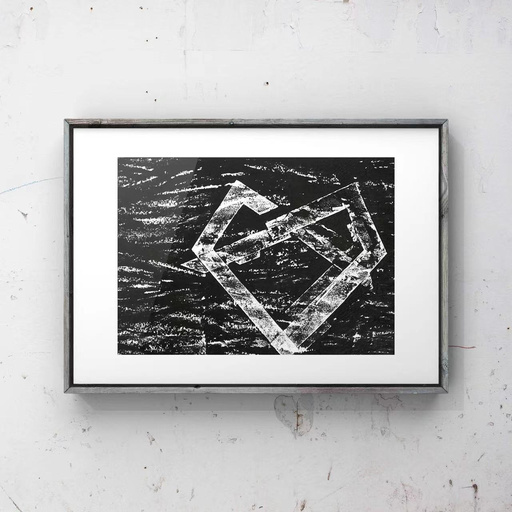
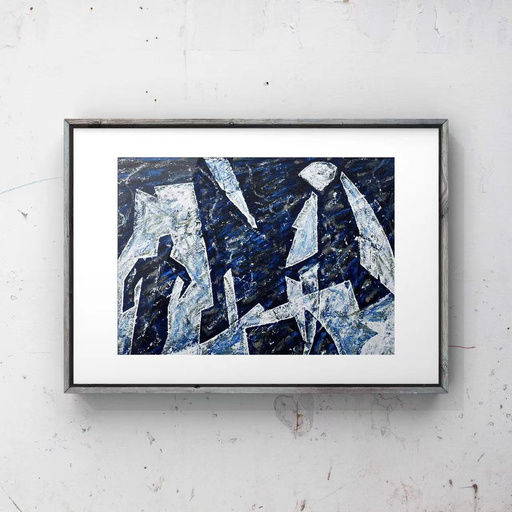
XINGSHA MONOTYPES / 2019 - 2020
A series of oil-based monotypes created whilst living near the Xingsha subway station in the Xingsha district of Changsha, China.
Selected examples of prints from this series shown.

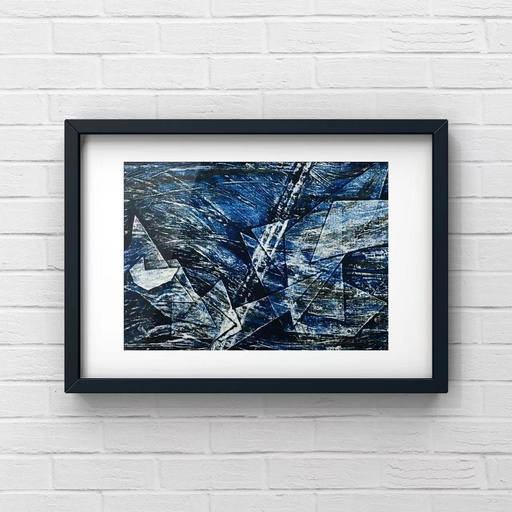
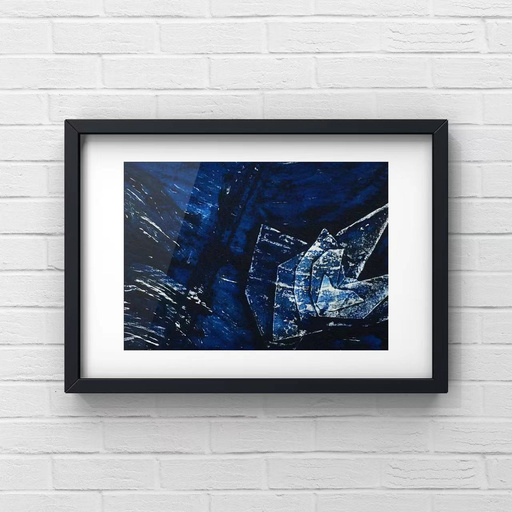
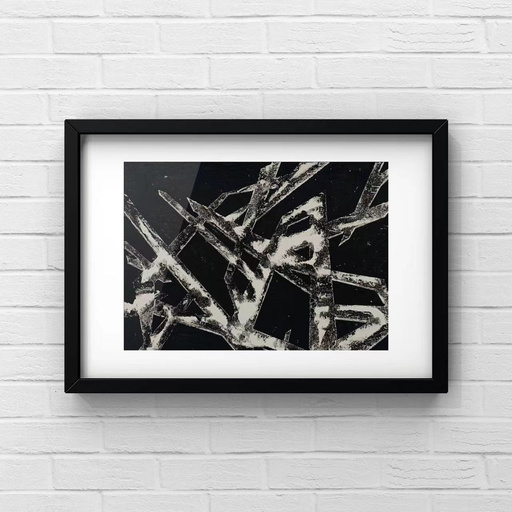
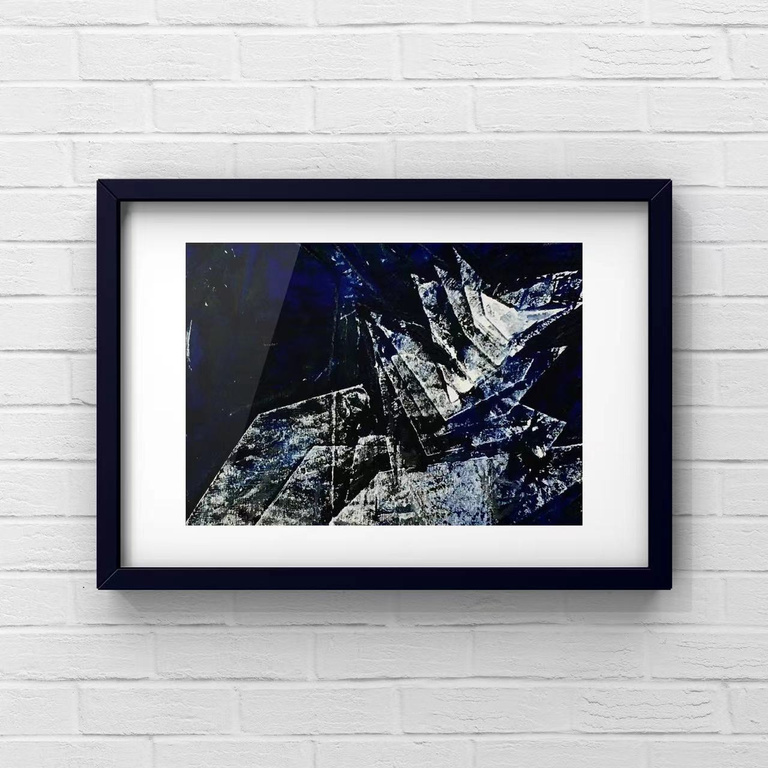
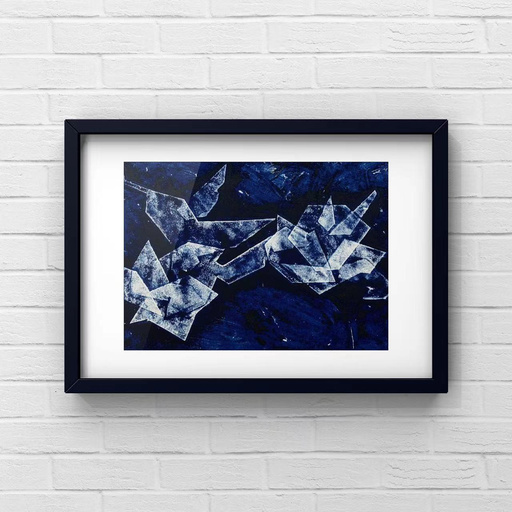
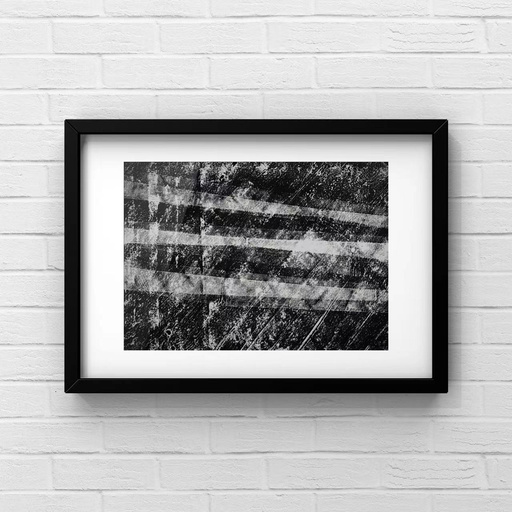
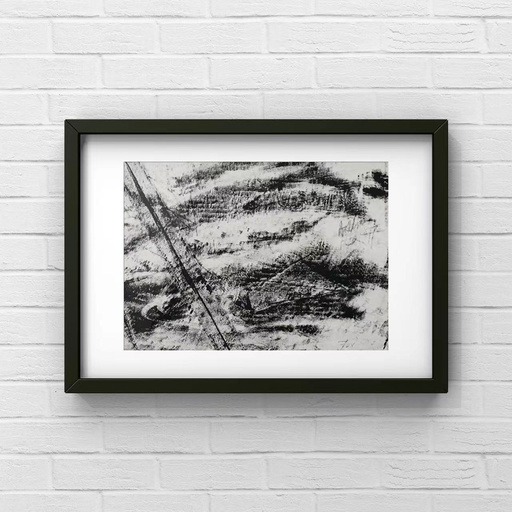
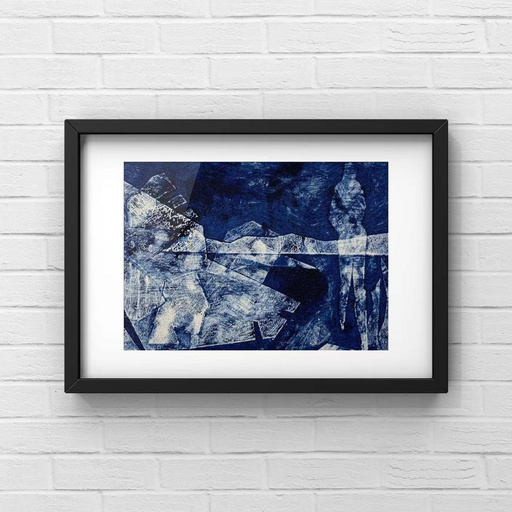
HUALIKAN MONOTYPES / 2018 - 2019
A series of oil-based monotypes created whilst living near the Hualikan subway station in the Shunyi district of Beijing, China.
Selected examples of prints from this series shown.
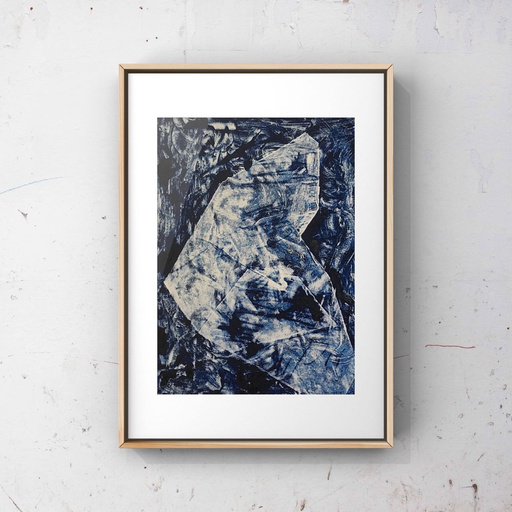
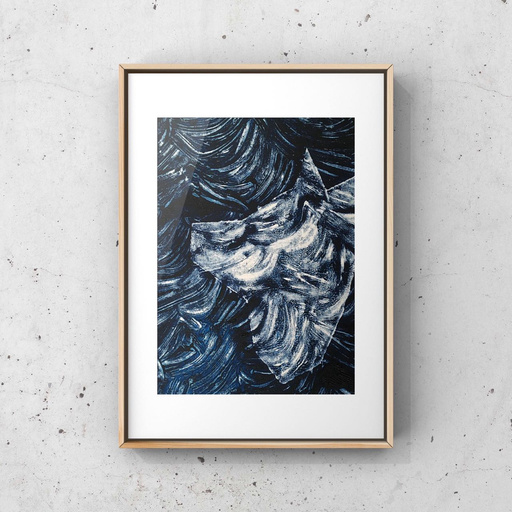
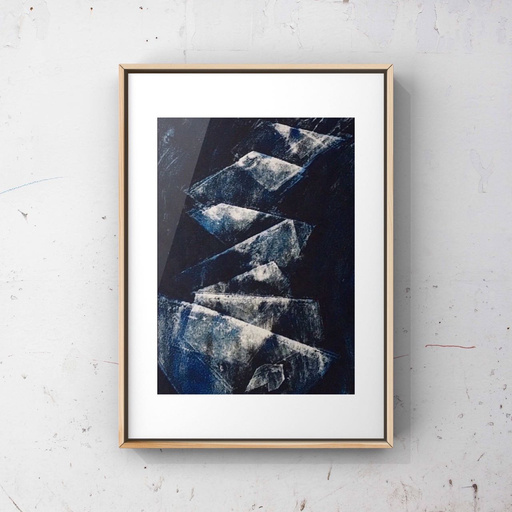
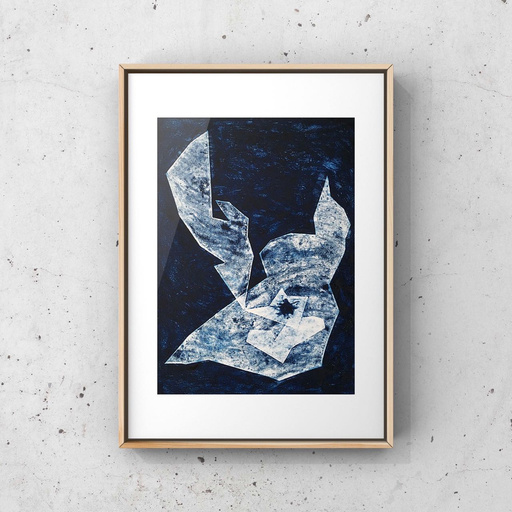
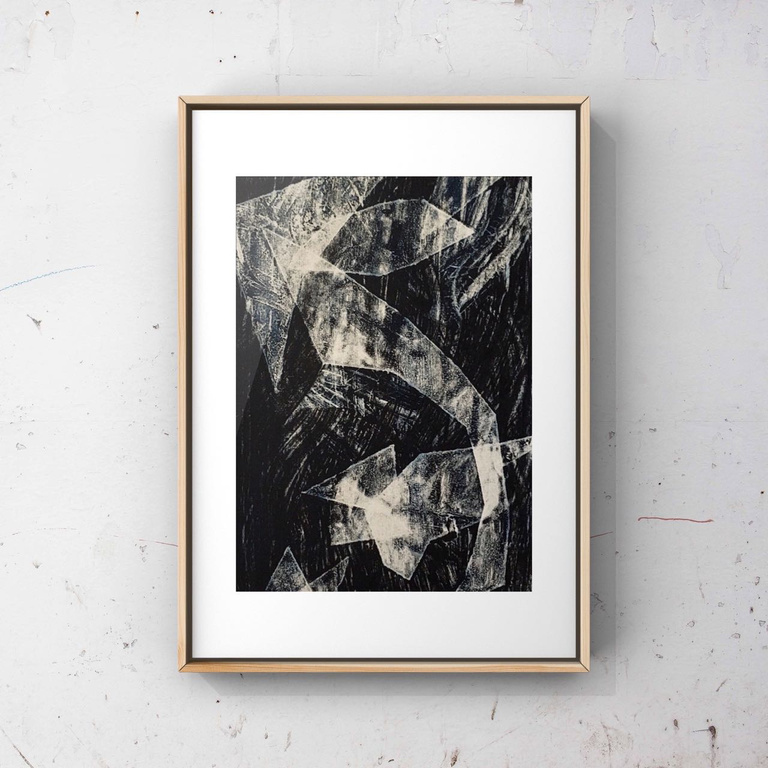
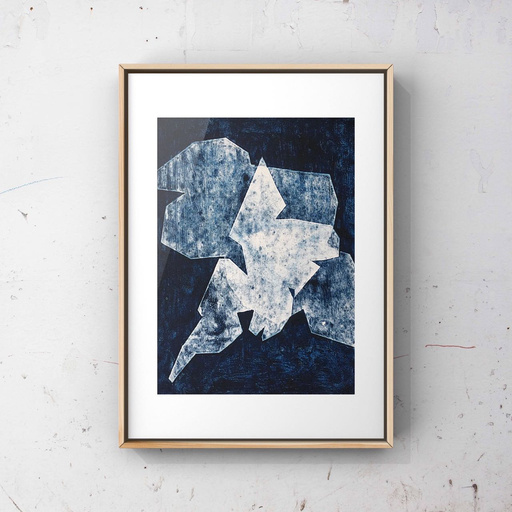
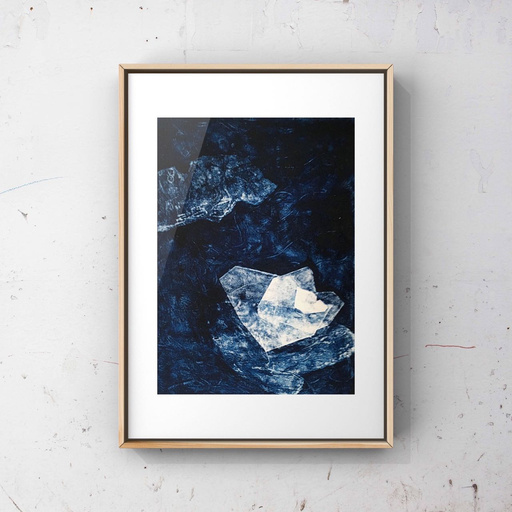
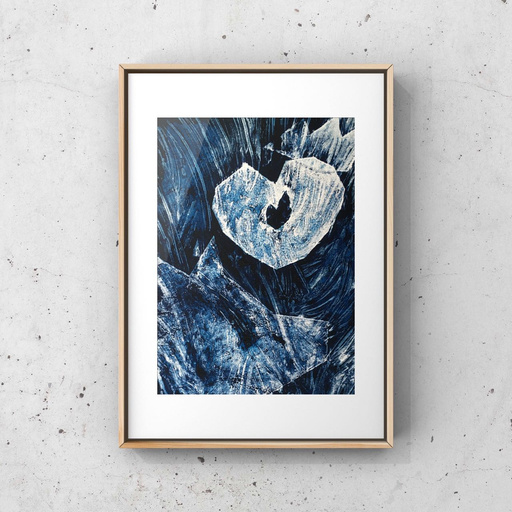
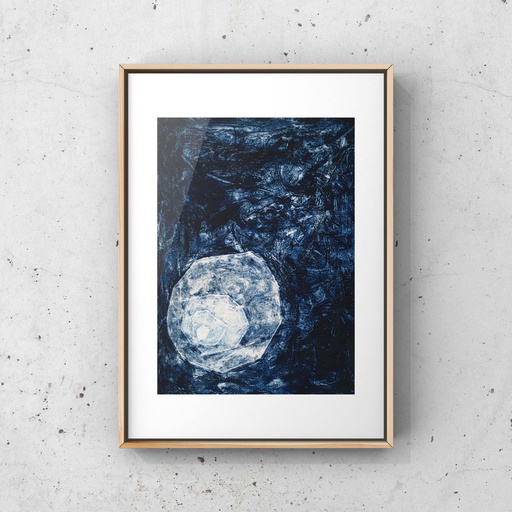
mIXED
Media
TOPOGRAPHIES / 2018 - 2022 (ONGOING)
Since 2013 my process of artmaking has continuously manifested as a succession of series ranging from drawings, giclée print editions, Indian ink paintings with felt-tip pen sketches, acrylic paintings, woodcuts, and more recently, monotypes.
Stylistically, my work has freely moved back and forth and in-between figurative imagery and altogether abstraction. Though the works produced in different series have engaged with a range of interconnected discourses and topics, there is one continuous underlying theme that is ever more at the forefront in my work as evident in the ongoing production of all my work, yet especially so in my mixed media imagery: this theme is what I refer to as my (Immaterial) Topographies.
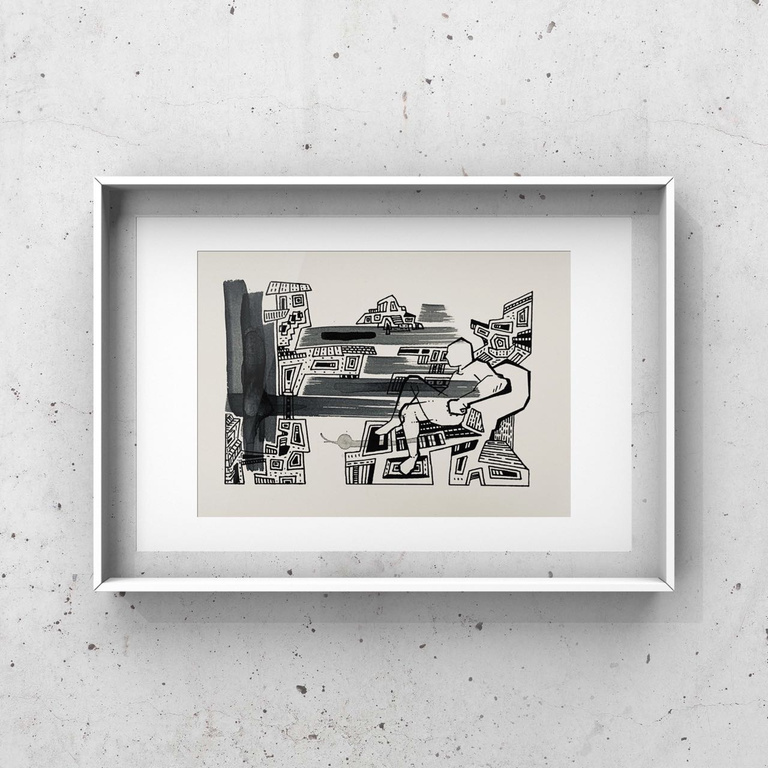
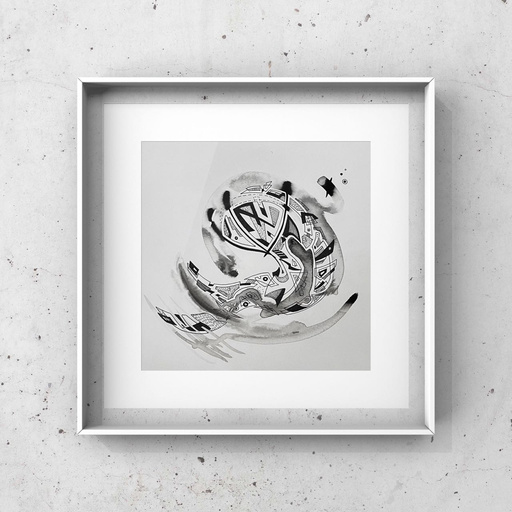
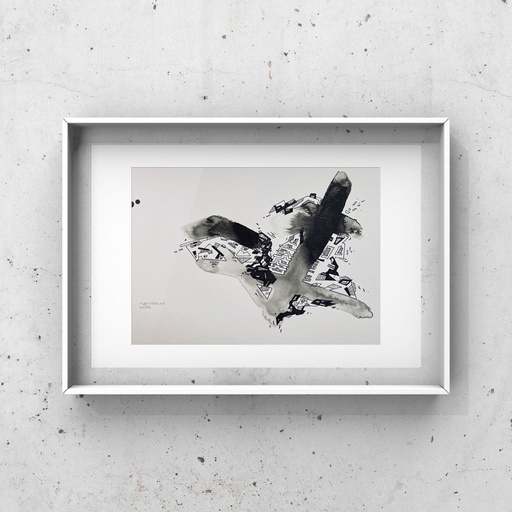
The term topography is to be understood as the graphic representation or mapping of a landscape’s surface. Originally, I explored this in conjunction with that which can be considered immaterial - either suggesting something that is of no significance or something that is not of a material substance. To me, this persistent theme of (immaterial) topographies relates to memory and experience as it is bound to place, i.e. to time and space (when they took place, where they took place). And the emotions related to the experiences informing our memories eventually seem to override the specific details of its time-space particulars, but for the memories to remain, however abstracted, aspects of these remain like non-material maps indicating an abstracted location where these memories continue to exist. I think of these as flowing inner landscapes - of no significance to others who cannot begin to comprehend who one might be because of this make-up of memories and experiences. Yet they do constitute an essential part of who we are, even more so when the prominence of our physical attributes diminishes or is vanquished.
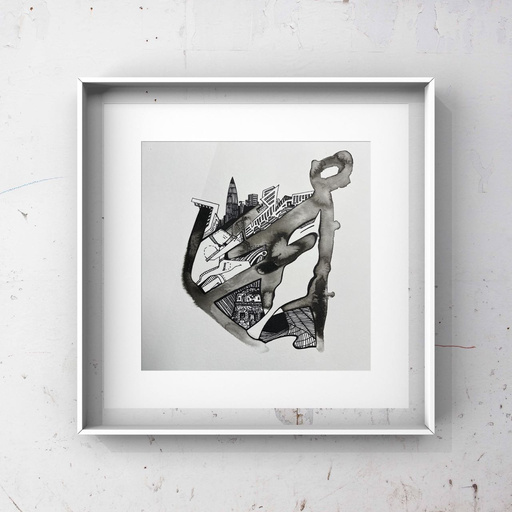
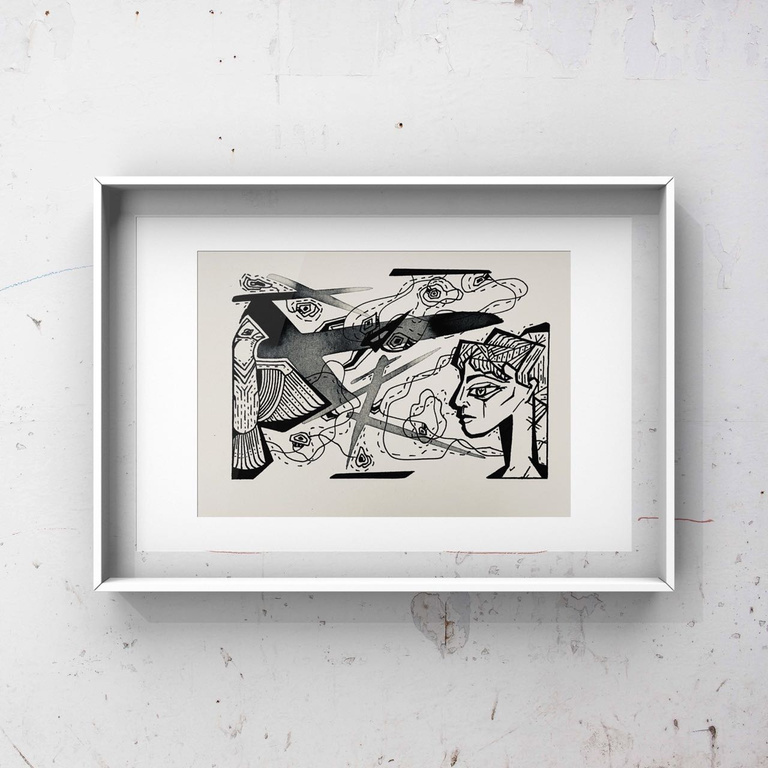
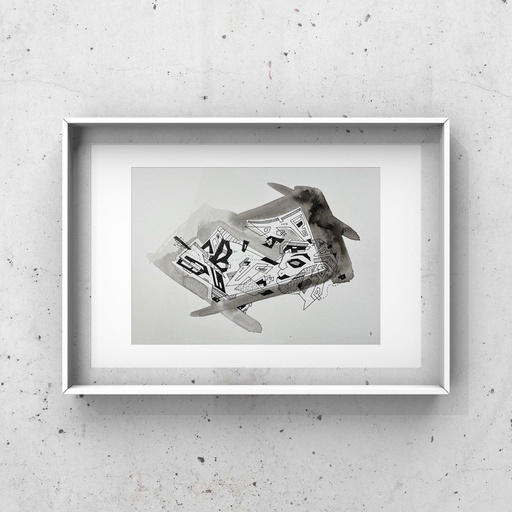
In an ever-increasing material world, there is something deeply non-material, immaterial, even spiritual, about the collection of events and feelings we carry in life as individuals. As immensely personal and unique as they are, collectively these immaterial topographies become an abstracted attribute we share as human beings. And to remain authentic and true, what I present in my work as such is deeply subjective and personal.
From its onset, my art has explored the complex relation between landscape, experience, and memory - albeit in forms of addressing politics, identity, or various forms of hybridity (from the intercultural to the historic and personal). This pursuit has often served as an avenue of dissent towards the common notion of 'everything under the sun (i.e. in art) has already been done', for I believe it means something different to be human today than it did in previous times, or will do in times to come. And, if it means something different to be human today, there is something different to say and conceive about the present-day human condition and zeitgeist as an artist.
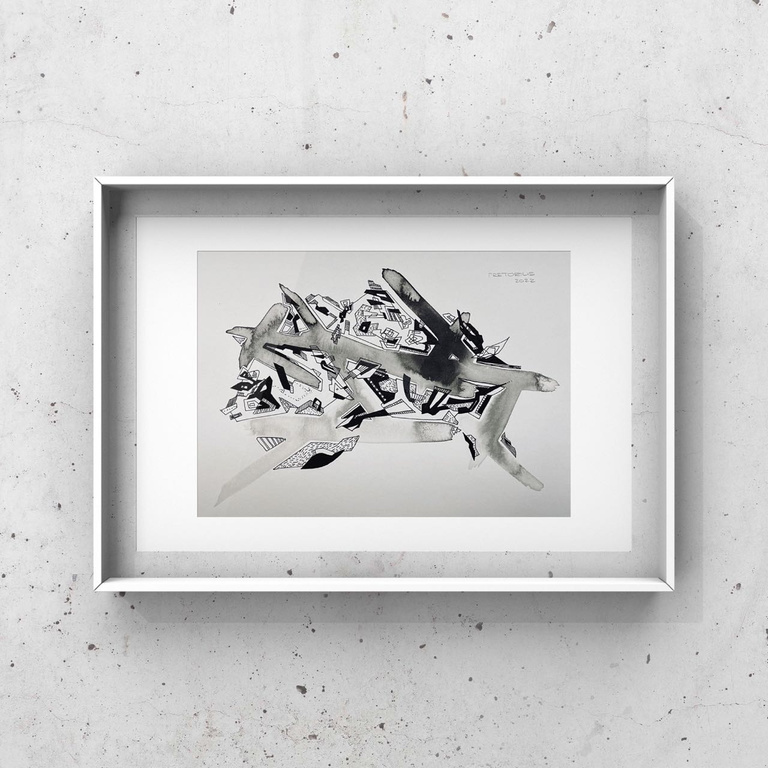
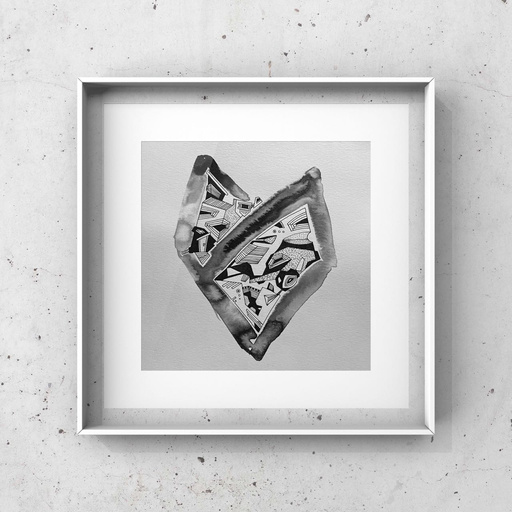
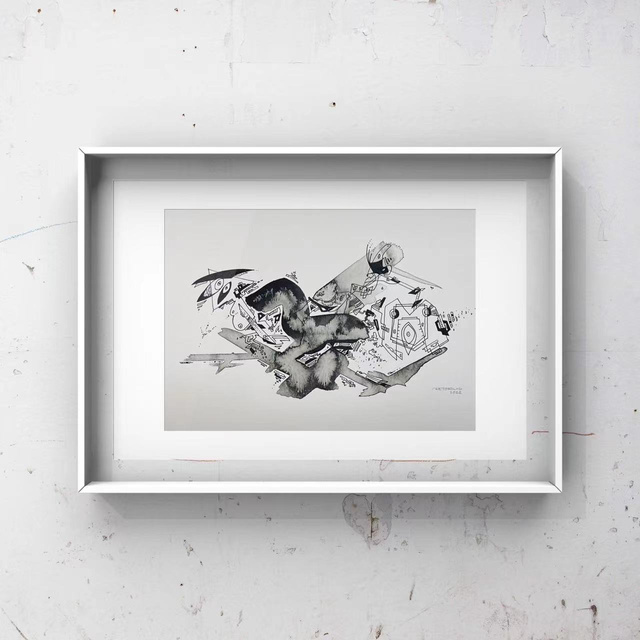
For me, it is through navigating new visual means of expressing my own immaterial topographies that I have found substance in this regard, for it holds something both highly intangible yet profoundly human all the same. More specifically, I value this for allowing me to delve into and grow in my own understanding of constructs like otherness, hybridity, loss, to be a dad, to know and understand loneliness amongst many, letting go of a former beloved country, raising sons in a language not my native own, and amongst an endless list, life as a Westerner from Africa in Asia.

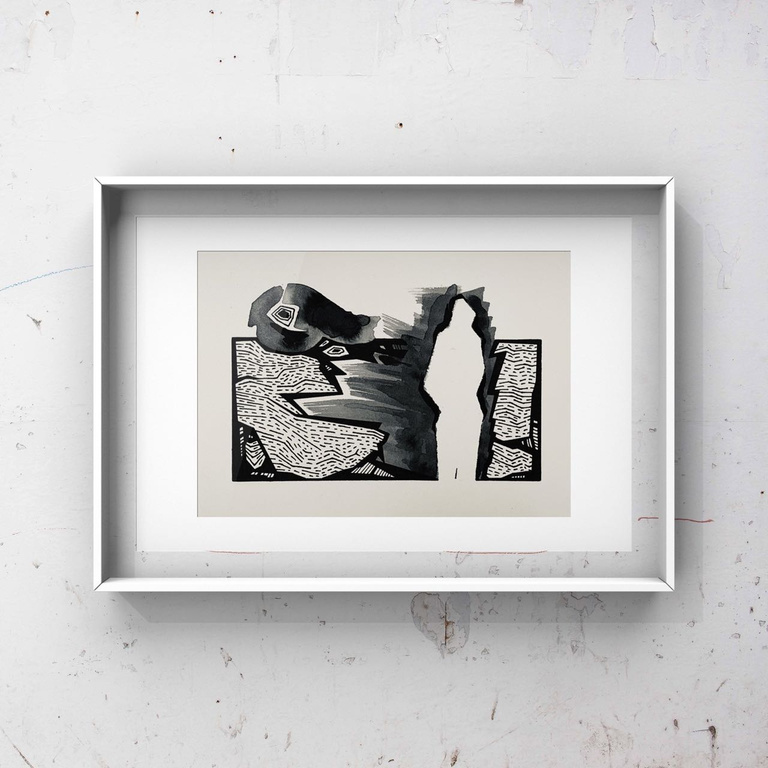
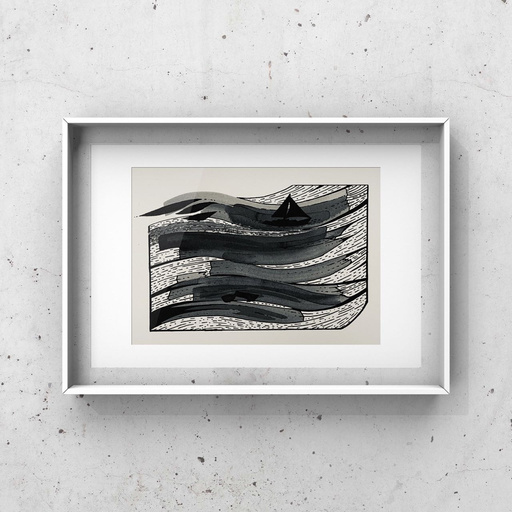
CRITICAL
ESSAY

ON THE ROAD TO WONDER / BY DAVID GIBSON
The paintings and monotypes of Fox Pretorius present both humanity and phenomena in nature as ambiguously altered by perspective and filled with dramatic portent. Each of Pretorius’ print series reflects random elements in which experiences and sensory events reduce to a certain range of impressions that result in either abstract or suggestively pictorial elements. The mood evoked by these works is demonstrably eerie, as if generated specifically by the process of formal depiction. Motion, mood, self-alienation, and being intensely overwhelmed by the psychological demands of everyday working life—all of these take on a dramatic and symbolic role in Pretorius’ works. Ordinary structures are transformed into grotesque settings. They feel like images from the dramatic backdrop of an epic play, with gods and monsters all around, and foreboding structures that have just emerged from the shadows.
The transformation of the everyday from its commonplace appearance into a dream state is the purview of the artist. The stripping away of layers of normality until the primal and mythical forms emerge intact, this is the magic of poetry and art. To seek the symbolic is natural to the artist, and every form that emerges from his imagination takes on a certain breathless portent. The less these forms appear realistic, the less the qualities of the story they tell can be easily ascertained.
Each of Pretorius’ series evokes a different layer of these imagined territories, perhaps gratuitously evoked from the mass of men and women populating the commercial and residential hubs where the artist has lived. If art has a primary use as a reflection of what is most immediately real, to reflect and symbolize it, then the mass of the working populace as individuals and masses of characters, and of the mass spaces they inhabit, if only transitionally, create a mirror for the artist.
Pretorius’ paintings are currently contained in a single series which he calls his ‘Pendoring Paintings’. The word refers to a type of tree common to his native South Africa. Reaching to a height of 40 feet, they are regularly covered with yellow flowers but also, amid the flowers and dense foliage, are a mass of long, hard, very sharp thorns. It’s said that where these trees are most common, they serve as a means of separating different territories, for the brambles represent a symbolic barrier. Yet for a young man with budding artistic tendencies, they must have presented a very compelling way to view the world. They have entered Pretorius’s visual language and have stayed relevant to the degree of meaning he actively implies: impressions from repetitive experience to transcend the overwhelming material and visceral demands of everyday engagement in a highly competitive urban environment, dynamically charged by the migrant populations that have transformed it from an agrarian to a metropolitan culture. The creative individual, especially one who has experienced displacement from homelands distant and alien to their current locale, is apt to experience a pressing degree of hardship that is best ameliorated and strengthened by reference to imagery carrying a strong aesthetic impact. They present as a lattice that both breaks down the gradations of any distinct form seen through them and generates an interior tension, from which we can contemplate our limits. Thus they magnify the possibilities for future experience, its envisionment, and the degree of agency possible for anyone aspiring to further heights.
Pretorius is not centered on a specific formal orientation but oscillates between figural and non-objective métiers. One continuous underlying theme is described in a phrase the artist has coined especially: “Immaterial Topography.” From the roots of each word, one can surmise that Pretorius desires to encompass his entire oeuvre in a manner that allows the viewer to move easily between them. His subject in each case is less the discernible object and more the process that led him to analyze and transform facile appearances into a transitive state of deconstructed realness. That is, the subject is both immaterial--in that its innate qualities need to be stripped down and reconstituted in the most base or essential terms--and the subject is again only the surface of purpose of appreciating creative intents. Shave away each layer of accepted meaning and eventually one is left with a completely different experience, an elemental topography. Here is where the viewer and the artist begin to speak the same language.
The more specific examples of his various bodies of work present the mutable categories of meaning within the overall basis of Immaterial Topographies. The early work which are primarily prints featuring the dematerialized forms of animals native to Pretorius’s surrounding countryside in South Africa, such as vultures, rhinos, elephants, turtles, and gemsboks. Each is presented in a minimal drawing that replicates its naturalistic appearance and then treats them to a formal atomization and reduction of lines and color until all that is left are basic line gestures to infer the type of animal depicted—as if the real creature were being taken out of their everyday existence and translated into a sort of hieroglyphic language narrating the passage of these animals through man’s world at a very early developmental stage in evolution. These are basic modernist tropes devised by Pablo Picasso and made more prevalent during the early Surrealist era by artists such as Jean Miro and Yves Tanguy among others. But Pretorius uses them to manifest specific animals not naturally occurring in a European context, and he does so to address the problems of conserving the species against annihilation as a result of industrial and residential expansion into the last remaining areas of animal territory. This type of consciousness-raising is central to the idealized role of the artist as a truth-speaker. If the animal or bird is depicted in art and ceases to exist in the world, then art itself will lose context.
Pretorius’ other prints, his monotypes, speak to a later period in his personal development when the reflection of pastoral images became subsumed by his newfound workaday impressions; having moved to China from South Africa, and having to reside in massive city centers to pursue professional employment. First Beijing, then moving progressively farther south, to Changsha, and then to Shenzhen, Pretorius made three series of monoprints that responded to what and who he saw around him, and how those impressions resulted in sequences of forms that were both evocative as final images and productive as changing ideas about the formal process at hand. Anyone who has traveled in foreign lands, where the language and customs are different from one’s own will, eventually, feel the downward push and pulse of a great organ of human movement. Making a life in such a place, and a creative life at that, creates images of primal, almost subconscious power. The ‘Hualikan Monotypes’ are the first among these, dating from 2018-19. These have the most elemental appearance, and seem to have been drawn from pieces of flotsam and jetsam, flashes of light, images seen at dusk or through heavy rain. They are evocative of the search for meaning in a new land and the choices he makes of what to print are evidence of that burgeoning consciousness. The ‘Xingsha Monotypes’ were completed from 2019-2020 and they more resemble rubbings or rayographs. There is less implied drama in these images and more of an engagement with the gritty physicality of an urban center. Detritus in the street, broken glass, steps in front of a building, faces passing close up and then quickly away in a deepening gloom, all are on hand. The third series, The ‘Taoyuancun Monotypes’ starting in 2021, are the least dramaturgic. They seem to be based on fast sketches of people standing or reclining while waiting for subway trains to arrive. The sketches are then reimagined in a Cubist fashion inspired by the drawings of Jean Dubuffet, in which almost awkwardly depicted bodies describe gestures without naturalistic detail. Yet the scaling of bodies within an atmospheric blue gradient enveloping them like a sky deepening toward night gives them an idyllic quality. We see bodies together, even mutually alienated ones, and we tend to perceive dramatic connections between them, even if merely imagined. Pretorius’s memories become figures in a dream. The artist, contrary to myths that somehow persist, does exist in the world, and gives meaning to all the individual contexts that have colored his experience as he moves through life challenges and the states of aesthetic engagement that are idiosyncratically intertwined with them. Pretorius has a long and winding tale to tell, and his works do the magic for him. It’s our duty to follow in wonder.
November 2021
LIST OF
EXHIBITIONS
TRAVELLERS / 3 - 30 JUN 2023
GALERIE SRV, OCT-LOFT/ SHENZHEN, CHINA
Solo exhibition
DIGITAL EXPLORATION / 17 - 28 OCT 2022
ISZAF VIRTUAL EXHIBITION / SHENZHEN, CHINA (ONLINE)
Virtual group exhibition hosted online by the International Shenzhen Artists Forum (ISZAF)
THE WORLD HAD CHANGED / 16 JUL - 20 AUG 2022
SHUXINTANG ART & CULTURE SPACE / SHENZHEN, CHINA
Annual Guyu Art invitational group exhibition
國內外藝術展 / 20 AUG - 9 SEP 2021
XINGSHA ARTS & CULTURE CENTER / CHANGSHA, CHINA
Group exhibition with art by Chinese and foreign artists based in Changsha, China
SHANGHAI INT’L ART FAIR / 21 - 24 NOV 2019
NATIONAL EXHIBITION & CONVENTION CENTER / SHANGHAI, CHINA
Solo booth @ international art fair
THE GRAND IV / 31 JUL - 5 SEP 2018
RUST & VREDE GALLERY / DURBANVILLE, SOUTH AFRICA
Biannual group exhibition with established and emerging South African artists
DISAPPEARANCE / 24 AUG - 22 SEP 2017
NORTH-WEST UNIVERSITY GALLERY / POTCHEFSTROOM, SOUTH AFRICA
Project co-leader; creative output research project & exhibition on poaching of wildlife & human trafficking in South Africa
THE LIMINAL / 24 AUG - 22 SEP 2017
NWU BOTANICAL GARDEN GALLERY / POTCHEFSTROOM, SOUTH AFRICA
Group exhibition (in collaboration with Disappearance project) with Beezy Bailey & Arnoldus Kennedy exploring the face of liminality in contemporary South Africa
THE GRAND III / 27 SEP - 26 OCT 2016
RUST & VREDE GALLERY / DURBANVILLE, SOUTH AFRICA
Biannual group exhibition with established and emerging South African artists
SIGSPRAAK / 14 APR - 6 MAY 2016
NWU BOTANICAL GARDEN GALLERY / POTCHEFSTROOM, SOUTH AFRICA
Solo exhibition
JOBURG FRINGE / 11 - 13 SEP 2015
ARTS ON MAIN MABONENG /JOHANNESBURG, SOUTH AFRICA
Annual fringe exhibition event held in conjunction with the Joburg Art Fair
ABCs OF LIFE / 22 JAN - 6 FEB 2015
LONG STREET ART LOVERS GALLERY / PRETORIA, SOUTH AFRICA
Group exhibition
CONTEMPORARY VISIONS ART FESTIVAL / 8 - 30 NOV 2014
MULTIVERSO / FLORENCE, ITALY
Group exhibition
KLEIN KAROO ARTS FESTIVAL / 29 MAR - 5 APR 2014
KUNSKWARTIER / OUDTSHOORN, SOUTH AFRICA
Group exhibition
* All work produced & exhibited up to Aug 2018 as Francois Pretorius
CONTACT
DETAILS
For my updated art catalogue with available artworks and prices, upcoming exhibitions, commission work, etc., you are welcome to contact me via the form below or via email at foxpretorius@email.com or via Instagram at @fox_pretorius